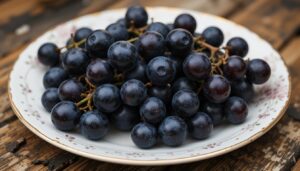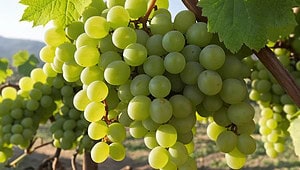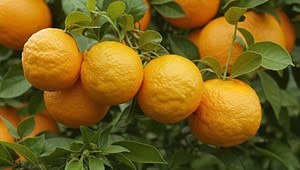Table of Contents
Sources of Vitamin C

Sources of Vitamin C
Vitamins are organic compounds that are essential for the normal functioning of the human body. Vitamins carry out various essential activities in our bodies, enabling us to live a healthy life. Vitamins rid our bodies of free radicals, boost our overall immunity, maintain the proper functioning of various inner organs, help us fight various non-communicable diseases, etc. There are 13 vitamins that scientists classify as essential vitamins – A, eight B vitamins, C, D, E, and K. Of these vitamin C or Ascorbic Acid is of very importance as it boosts overall immunity and aids the healing process of the body.
Unfortunately for us, human bodies cannot synthesize any of these vitamins except for vitamin D which our skin can produce in the presence of sunlight. Our bodies can also synthesize some amount of vitamin B3, but the amount is negligible and does not amount to much at all. Our bodies also can’t produce vitamin C which is a water-soluble vitamin. We have to ingest various sources of vitamin C, solid food or liquid, to maintain the balance of the vitamins. Also, if the sources of vitamin C, vegetables or fruits, are exposed to heat through cooking or any other processes, the vitamin C might get destroyed.
Various supplements and medicines can provide good amounts of Vitamin C but natural sources of vitamin C are much more preferable for a healthy life. Apart from the fact that our bodies can’t produce vitamin C, we can’t store it in our bodies. We have to regularly consume fruits and vegetables that have good amount of vitamin C. Supplements and medicines may not be good options for the general masses. So, we must be aware of various fruits and vegetables that are good sources of vitamin C.
In this article, we are going to talk about 6 such fruits and vegetables that are good sources of vitamin C.
1. Indian Gooseberry

Sources of Vitamin C – Indian Gooseberry
Indian Gooseberry is one of the best sources of Vitamin C. Scientifically named Phyllanthus Emblica, the Indian Gooseberry tree is a deciduous tree that belongs to the Phyllanthaceae family. The tree is native to the temperate Indian subcontinent and Southern Asia. The Indian Gooseberry fruit is generally round, small, and green/yellow. Due to the high content of ascorbic acid (Vitamin C), citric acid, gallic acid, and other acidic components, Indian Gooseberry tastes very bitter and sour.
Indian Gooseberry is one the best sources of Vitamin C and 100 grams of the fruit contains almost 600-700 mg of Vitamin C. Apart from Vitamin C, it contains other vitamins such as vitamin A, B1, E, etc, dietary fiber, antioxidants such as thiamine, riboflavin, carotene, minerals such as iron, calcium, magnesium, phosphorus, potassium etc. It provides some amazing health benefits. Due to its high Vitamin C content, the fruit strengthens the overall immunity. It also helps maintain blood sugar levels and aids in fighting type-2 diabetes. Vitamin C and other antioxidants rid the body of free radicals. Indian gooseberry also aids in weight management and boosts our heart health. It may also have cancer-fighting capabilities.
As Indian gooseberry is one of the best sources of Vitamin C, it has a lot of acid in it which makes the fruit very sour and bitter. Hence it is hard to consume the fruit raw. Hence, Indian Gooseberry is consumed via other methods. In various dishes of sub-continent, it is added for its sour taste. It is also used in various types of pickles and chutneys.
People in South Asian countries also consume Indian Gooseberry in powder form. Those who want to eat it raw but can not stand the bitter and sour taste, mix the fruit with various salt and spices and consume it as a snack or add-on food item. However, the most popular form of consuming the Indian gooseberry is in juice form.
It is granted that Indian Gooseberry is one of the greatest sources of Vitamin C and has some amazing health benefits. Still, overconsumption of it may lead to some health issues. In some cases, too much Indian Gooseberry may negatively affect blood thinning medicines and prevent normal blood clotting. It may also possess anit-platlate properties. Pregnant and breastfeeding persons should consult a doctor before consuming the fruit and at some time should avoid consuming the fruit.
2. Bell Peppers

Sources of Vitamin C – Bell Pepper
Bell Papers, scientifically known as ‘Capsicum Annuum’, are one of the best sources of Vitamin C. Native to Central and South America, Bell Peppers belong to the ‘Solanaceae‘ family of flowering plants. Bell Peppers are technically berry fruits. however, for culinary purposes, they are regarded as ‘vegetables’. Bell Peppers are hollow fruits with a squared roundish appearance with white seeds inside. The fruit starts as green-colored but turns red-colored as it ripens. Other than red, ripened Bell Pepper fruit can be yellow, orange, black, purple, etc.
Ripened Bell Peppers are better sources of Vitamin C than the unripe green ones. A ripened bell pepper contains 170-180 mg of Vitamin C per 100 grams while green ones may contain 120-130 mg of Vitamin C. As the fruit ripens, it becomes sweeter. Other than Vitamin C, Bell Peppers are also good dietary sources of Vitamin A, E, K, B6, and B9. They also contain Potassium, Magnesium, Phosphorus, Iron, Calcium, etc. Bell Peppers are also rich in various antioxidants such as Capsanthin, Lutein, Violaxanthin, Luteolin, Zeaxanthin, etc. The presence of Capsanthin gives the ripened Bell Peppers their deep red tinge.
Bell Peppers are eaten raw and cooked. They can be added raw to salad or fried, baked, or grilled. Bell Peppers can be diced, fried, and tossed into pizza pasta, or noodles. Bell Peppers can also be stuffed with various fillings. Alongside adding texture and taste to the food, the vibrant colors of Bell Peppers add visual aesthetics to the food.
Bell Peppers also come with amazing health benefits. As one of the best dietary sources of Vitamin C and other vitamins, consuming Bell Peppers boosts our overall immunity. Vitamin C presence in the Bell Peppers aids in the absorption of iron which help us fight off anemia. Bell Peppers increase our vision and improve our overall eye health. Consumption of Bell Peppers may improve our heart health and help prevent cancers. Bell Peppers may
However, we must remember that, even though Bell Peppers are amazing for health and they are one of the best sources of Vitamin C and other nutrients, overconsumption of them may lead to unwanted health hazards such as indigestion, bloating, loose motion, etc. In some cases, Bell Peppers may start an allergic reaction.
3. Broccoli

Sources of Vitamin C – Broccoli
Broccoli, scientifically named ‘Brassica Oleracea (Variety: Italica’), is a flowering plant that belongs to the ‘Brassicaceae’ family. Originating from Italy, Broccoli is one of the best vegetable sources of Vitamin C and 100 gm of raw Broccoli has 85-95 mg of Vitamin C. Broccoli plant belongs to the cabbage family and is closely related to cauliflower, cabbage, Brussels sprouts, etc. The soft stalk and the leaves of the plant can also be consumed. The edible green flower of the plant is consumed by us as ‘Broccoli’. The green flower head spreads out from a thick but soft stem and branches out in a tree-like formation.
Apart from being one of the best dietary sources of Vitamin C, broccoli is also one of the good sources of Vitamin K. Broccoli also contains other essential vitamins such as Vitamin A, E, B1, B2, B3, B5, B6, B9, etc. It is also rich in various minerals such as potassium, phosphorus, sodium, magnesium, calcium, iron, zinc, etc. Broccoli also has abundant plant components, such as glucoraphanin, beta-carotene, lutein, zeaxanthin, etc which are essential antioxidants.
Even though raw broccoli has the highest concentration of vitamins and minerals, eating raw broccoli can cause serious side effects for some people. Some people may experience nausea, vomiting, indigestion, bloating, gass, etc. Eating baked, grilled, steamed, boiled, and stir-fried broccoli may be advised for such people. Broccoli can be eaten solo or can be mixed with other vegetables. It can also be mixed with staple foods such as rice, noodles, pasta, etc.
Eating broccoli has some great health benefits. The antioxidants present in it help our bodies to nullify the damaging free radicals. Various Vitamins in Broccoli, including Vitamin C, help boost our overall immunity. Eating broccoli is linked with reduced chances of getting cancer. Broccoli is high in dietary fiber which may help us manage our weight and help us fight off obesity. Broccoli may also help us regulate our blood sugar. It also helps improve our heart health. Broccoli helps strengthen our bones and lower blood pressure, as it is rich in calcium and potassium.
However, we need to avoid consuming too much of Broccoli. Granted that it is one of the best sources of Vitamin C, too much consumption of it may lead to some serious health hazards. Too much of Broccoli may lead to bloating and indigestion. Broccoli has Vitamin K and too much Vitamin K may interfere with blood thinning medication. Broccoli is also rich in Potassium and too much of it may lower the blood pressure and cause hypotension.
4. Brussels Sprouts

Sources of Vitamin C – Brussels Sprouts
Just like Broccoli, Brussels Sprouts belong to the ‘Brassicaceae’ family and, just like Broccoli, Brussels Sprouts are also one of the best vegetable sources of Vitamin C. Brussle Sprouts are also a member of the cabbage family and their scientific name is ‘Brassica Oleracea’. However, unlike Broccoli, which belongs to the ‘Italica’ variety, Brussels Sprouts belong to the ‘Gemmifera’ variety. Native to Northern Europe, Brussels Sprouts is perhaps first cultivated in ‘Brussels’ of Belgium.
Brussels Sprouts plant is a biennial flowering plant. However, as we consume edible ‘buds’ of the plant, it is harvested within one year of its cultivation. The plant can be 2-3 feet tall and the edible ‘buds’ grow alongside the stem. The buds look like small and round cabbages with 1-1.5 inches in diameter. It is an extremely nutritious vegetable and one of the good sources of Vitamin C. 100 grams of Brussels Sprout contains 80-90 mg of Vitamin C. Raw Brussels Sprouts are much more healthy as the cooking heating may destroy Vitamin C and other nutrients. Chopped Brussels Sprouts can easily be part of a healthy salad.
Apart from being one of the best sources of Vitamin C, Brussels Sprouts are also a good source of other Vitamins such as Vitamin A, K, B1, B3, B5, B6, B9, etc. They also contain some very important minerals such as potassium, phosphorus, calcium, sodium, magnesium, iron, zinc, etc. Brussels Sprouts also contain various essential plant components and antioxidants such as beta-carotene, lutein, zeaxanthin, alpha lipoic acid, kaempferol, etc. Hence, eating Brussels Sprouts comes with some amazing health benefits. They can be added alongside other food items or can be prepared solo. They can be cut into two halves or can be prepared whole. Brussels Sprouts can be baked, grilled, stir-fried, roasted, or sauteed.
Brussels Sprouts are low in calories and high in dietary fiber. Dietary fiber is good for weight management and helps us reduce our weight. It also helps regulate blood sugar levels. Brussels Sprouts are also good for the heart health. Consumption of Brussels Sprouts is also linked with the lowering of bad cholesterol. Antioxidants present in the Brussels Sprouts repair damaged cells hence they lower the chances of cancer significantly. They also help reduce inflammation. Vitamin C in the vegetable boosts our immunity and repairs cuts and bruises. Vitamin K in Brussels Sprouts may help us regulate blood pressure.
Even though Brussels Sprouts are one of the greatest sources of Vitamin C, overeating may lead to some health worries. Too much Brussels Sprouts may cause indigestion, gas, and bloating as they have a high concentration of fiber. Brussels Sprouts are rich in Vitamin K which helps in blood clotting. Too much of the Vitamin may interfere with blood thinning medication.
5. Oranges

Sources of Vitamin C – Oranges
Scientifically known as ‘Citrus Sinensis’, oranges are among the best sources of Vitamin C. Just like lemon, oranges are also a citrus fruit and belong to the Rutaceae family. Compared to lemons, Oranges are much sweeter, bigger, and are ‘orange’ in color. Oranges are round and have thick outer skin. Each fruit has independent 8-10 segments that are covered with a white membrane. Inside these independent membranes, there are small transparent sacs that are full of sweet orange color juice.
Native to South Asia, Oranges are a tropical and sub-tropical fruit. The most common organes are called ‘sweet oranges’ due to their sweet taste. There can be some other types of sweet oranges such as mandarin oranges, jaffa oranges, satsuma oranges, etc. There is one type of sweet orange that has crimson red pulp hence, upon peeling, looks like ‘blood’ orange. There are some other varieties, such as marmalade, bigarade, Seville, etc, of oranges that can be bitter and sour. These bitter oranges are known as ‘Citrus Aurantium’. Regardless of types or varieties, all these oranges are good sources of Vitamin C.
A medium-sized orange has about 80-85 mg of Vitamin C while 100 grams of orange juice contains approximately 55-60 mg of vitamin C. Apart from vitamin C, orange also has vitamins A, B1, B6, B9, etc. It also contains some important minerals such as potassium, calcium, magnesium, phosphorus, etc, and a trace amount of iron. Oranges also contain various plant components and antioxidants such as choline, zeaxanthin, hesperidin, naringenin, carotenoids, etc.
These antioxidants, along with vitamin C and other vitamins, improve our overall immunity and rid our bodies of harmful free radicals. Consumption of oranges may lead to some excellent health benefits. It may help us regulate our blood sugar levels. Vitamin C may help us fight off anemia indirectly by helping our bodies to absorb iron. Oranges also regularize the levels of bad cholesterol in our blood and reduce the chances of heart attacks. They also minimize the probability of contracting various types of cancers.
However, in some cases, oranges can be harmful. Oranges might be one of the best sources of Vitamin C but they might induce allergic reactions in some people. Oranges also have high acidic content which might adversely affect our teeth and cause heartburn in some people. Consuming too much oranges may increase potassium levels which might interfere with various blood thinning medications. Too much potassium in the blood may lead to various kidney diseases.
6. Lemon

Sources of Vitamin C – Lemons
Lemon, scientifically known as ‘Citrus Limon’, is one of the best sources of Vitamin C. It is a small evergreen flowering plant that belongs to the ‘Rutaceae family. Unlike ‘Deciduous’ trees, whose leaves fall off in the winter season, the leaves of ‘evergreen’ trees remain green even in the winter season and don’t fall off. The lemon is an aromatic and pulpy fruit and can be small to medium in size. It has an oblong shape and mostly is yellow when ripened. It has a thick but soft outer skin and 6-10 chambers full of pulp. The transparent pulps are full of juice which can be sour and acidic and yet flavorful in taste.
We can easily extract the lemon juice from the pulp after cutting and squeezing the fruit. Due to its acidic and sour taste, the lemon juice is consumed after mixing with sufficient water. Lemon juice, mixed with water and some sugar, is a great refreshment in summer weather. Due to its flavor and aroma, lemon juice is used in various desserts, sweets, licenses, ice cream, cakes, curds, etc. It is also used in various cooked food items and salads.
As I mentioned before, lemon juice is one of the greatest sources of Vitamin C. Apart from that, it also contains various other important plant components, nutrients, and antioxidants – Vitamin B1, B2, B6, Citric Acid, Eriocitrin, D-limonene, calcium, manganese, potassium, etc. A mid-sized whole lemon fruit may contain 40-45 mg of Vitamin C. As per weight, 100 gm of lemon juice may contain 45-50 mg of Vitamin C. Lemon may help prevent various lifestyle diseases such as type-2 diabetes, cancer, obesity, heart attacks, etc. It also helps in improving digestive health, preventing anemia, and forming kidney stones.
Although lemon is one of the best sources of Vitamin C, overconsumption may cause some health issues. Various acids present in lemon juice may cause acidity in some persons and may negatively affect the enamel of teeth. It may also cause allergies in some persons.
Caution
Of course, this list is not exhaustive. Many other vegetables and fruits are very good sources of Vitamin C. Also, fruits, especially citrus fruits, are better sources of Vitamin C than vegetables. Vitamin C tends to disintegrate in heat. So cooking process of vegetables may lower the Vitamin C present in the vegetables. While, fruits, including citrus fruits, are consumed raw, they preserve the Vitamin C in them.
Also, these sources of Vitamin C do have their side effects. Some of them are listed in individual segments. Too much consumption of these fruits and vegetables may lead to various unwanted health hazards. Some of the components in these fruits and vegetables may interfere with various medications. Most importantly, these fruits and vegetables can’t be alternatives to medicines. Medical professionals and doctors must be advised in case of any emergency.
*This article is for information purposes only. Do not make critical decisions solely based on this article. Consult a medical professional or a doctor in case of a medical emergency.
Read More Articles About Science and Space
- Oranges: 11 Incredible Facts About This Tangy Citrus Fruit
- NASA’s MOXIE Creates O2: Big Step Towards Mars Colonization
- Lemons: 8 Astounding Facts About This Remarkable Super Fruit
- With Chandrayaan 3 Success, India Basks in Pride and Glory
- Top 5 Bitter Vegetables That Are Incredible For Our Health
- Grapefruit: 8 Incredible Facts About This Amazing and Tasty Superfruit
- Top 5 Amazing Properties of Time That Defy Common Sense
- Top 5 Important Citrus Fruits That You Should Know About
- 10 Factors for Emergence of Intelligent Life in The Universe
- Top 4 Important Vegetable Groups That You Should Be Aware Of
- Discoveries by JWST: 10 Incredible Findings of The Telescope
- Space Science: 6 Vital Reasons Why We Should Invest in It
- Solar System: 10 Astonishing Uniqueness of our star system
- Our Universe: An Incredible Journey of 13.7 Billion Years
- Indian Gooseberry (Amla): 10 Amazing Facts About This Wonder Fruit
- Top 6 Solar System Objects That Might Destroy Life On Earth
- The Great Physicist Peter Higgs Passes Away at 94
- Certain End of The Universe: 4 Forces of Nature to Watch Out For
- Big Bang: An Incredible Start of Universe 14 Billion Years Ago




